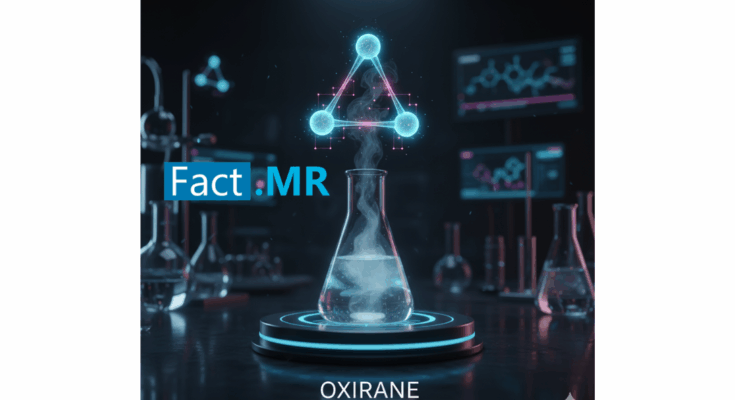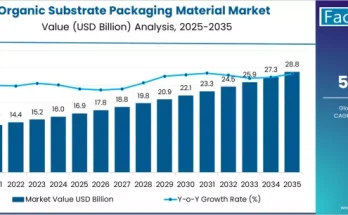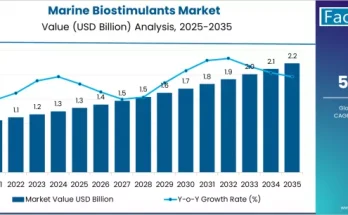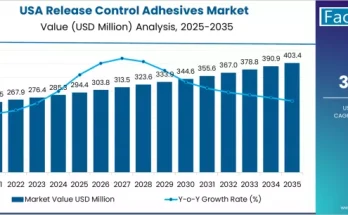According to the latest industry insights from Fact.MR, the global Oxirane market, valued at USD 41.4 billion in 2024, is poised to grow steadily at a CAGR of 4.6%, reaching USD 64.8 billion by 2034. The compound, widely known as ethylene oxide, continues to play a pivotal role in high-performance materials, chemical synthesis, and industrial applications across multiple verticals.
The increasing integration of advanced manufacturing technologies, the rapid expansion of Asia-Pacific’s industrial infrastructure, and the global shift toward eco-friendly chemical production are key catalysts driving market expansion.
Rising Industrial Demand Strengthens Growth Outlook
Oxirane’s versatility as a precursor to numerous chemical compounds underpins its expanding use across electronics, pharmaceuticals, automotive, and construction sectors. As global industries pursue lightweight, durable, and high-performance materials, Oxirane-based polymers and resins are becoming critical components in advanced manufacturing systems.
In 2024, the electronics segment accounted for 27.7% of total market share, reflecting Oxirane’s growing relevance in semiconductor production and miniaturized device manufacturing. Meanwhile, the industrial-grade Oxirane segment, generating USD 18.3 billion in 2024, is forecasted to create an absolute dollar opportunity of USD 10.9 billion through 2034.
Key Market Drivers: Technology, Sustainability, and Industrialization
-
Advanced Manufacturing Demand:
The use of Oxirane-based materials in high-performance composites and precision manufacturing is rising sharply. Industries such as aerospace and automotive are adopting Oxirane derivatives for their exceptional mechanical and chemical properties. -
Healthcare and Pharmaceutical Applications:
Expanding applications in medical devices, sterilization agents, and pharmaceutical intermediates have positioned Oxirane as a cornerstone compound in global healthcare innovation. Growing healthcare infrastructure and increased focus on personalized medicine continue to amplify consumption. -
Sustainability and Circular Economy:
Manufacturers are actively investing in bio-based production technologies and carbon-neutral operations, aligning with global sustainability goals. Between 2027 and 2030, market consolidation through mergers and acquisitions will redefine competitive structures, emphasizing green manufacturing and advanced recycling technologies.
Regional Insights: Asia-Pacific Leads the Global Surge
The Asia-Pacific region remains the epicenter of Oxirane market growth, projected to expand at a CAGR of 4.7%. Rapid industrialization, strong demand for derivative products, and government-backed innovation initiatives in China and India are contributing to the region’s leadership.
China, in particular, stands out as a strategic growth hub, with Oxirane demand projected to climb at 4.9% CAGR. The country’s large-scale semiconductor manufacturing, extensive infrastructure development, and push for domestic production capabilities are strengthening its global position. By 2034, China’s Oxirane market is expected to reach USD 9.3 billion.
In North America, the United States remains a critical player, driven by robust research infrastructure and advanced manufacturing. The U.S. Oxirane market, valued at USD 7.8 billion in 2024, is projected to expand at a 5.0% CAGR, creating an absolute dollar opportunity worth USD 4.9 billion through 2034. High levels of R&D investment and reshoring of chemical production are supporting continued market momentum.
Industrial Grade Oxirane: The Backbone of Manufacturing Growth
The industrial grade category continues to dominate due to its versatility, cost-effectiveness, and reliability in large-scale applications. Manufacturers are improving process efficiency, quality assurance, and supply stability to meet expanding industrial demand.
Investments in automation, digital monitoring systems, and sustainable feedstock utilization are transforming production lines. The integration of AI-driven optimization tools in Oxirane manufacturing is expected to further reduce waste and enhance output consistency.
Emerging economies are particularly benefiting from industrial-grade Oxirane, as it supports manufacturing excellence, energy efficiency, and sustainable production models — essential for industrial modernization.
Electronics Sector: Driving Innovation and Value Creation
The electronics and semiconductor segment remains one of the most promising application areas for Oxirane. The compound’s high purity levels and performance consistency make it ideal for precision chemical synthesis and microelectronic fabrication.
As global manufacturers ramp up domestic electronics production and pursue advanced miniaturization, Oxirane’s demand trajectory will continue to accelerate. In 2024, the global electronics application segment generated USD 11.4 billion, underscoring its growing commercial significance.
Competitive Landscape: Strategic Expansion and Technological Modernization
Leading market participants such as BASF SE, Dow Chemical Company, LyondellBasell Industries, INEOS, Shell Chemicals, Reliance Industries Limited, and Sinopec Corporation are actively expanding capacity, upgrading technology, and forming long-term collaborations to reinforce their global standing.
Recent developments include:
-
July 2024 – BASF SE announced expansion of its Oxirane production capacity at Ludwigshafen, integrating advanced process technologies to boost efficiency and reduce emissions.
-
March 2024 – Dow Chemical completed modernization of its Texas Oxirane facility, implementing next-generation automation and control systems to improve safety and yield.
Such advancements reflect a broader industry trend toward digitization, automation, and environmental responsibility, shaping a more competitive and sustainable global market ecosystem.
Future Outlook: A Decade of Opportunity and Transformation
From 2024 to 2034, the Oxirane market’s trajectory will be marked by technological innovation, sustainability integration, and strategic realignments. Manufacturers are expected to invest heavily in R&D, automation, and bio-based production, reinforcing Oxirane’s role as a core industrial chemical for future-ready economies.
Fact.MR analysts project that digitalized production systems, low-emission technologies, and specialized product formulations will define competitive advantage in the coming decade. The evolving regulatory frameworks and increasing consumer preference for sustainable products are expected to further catalyze transformation across the global Oxirane value chain.
Browse Full Report https://www.factmr.com/report/oxirane-market



